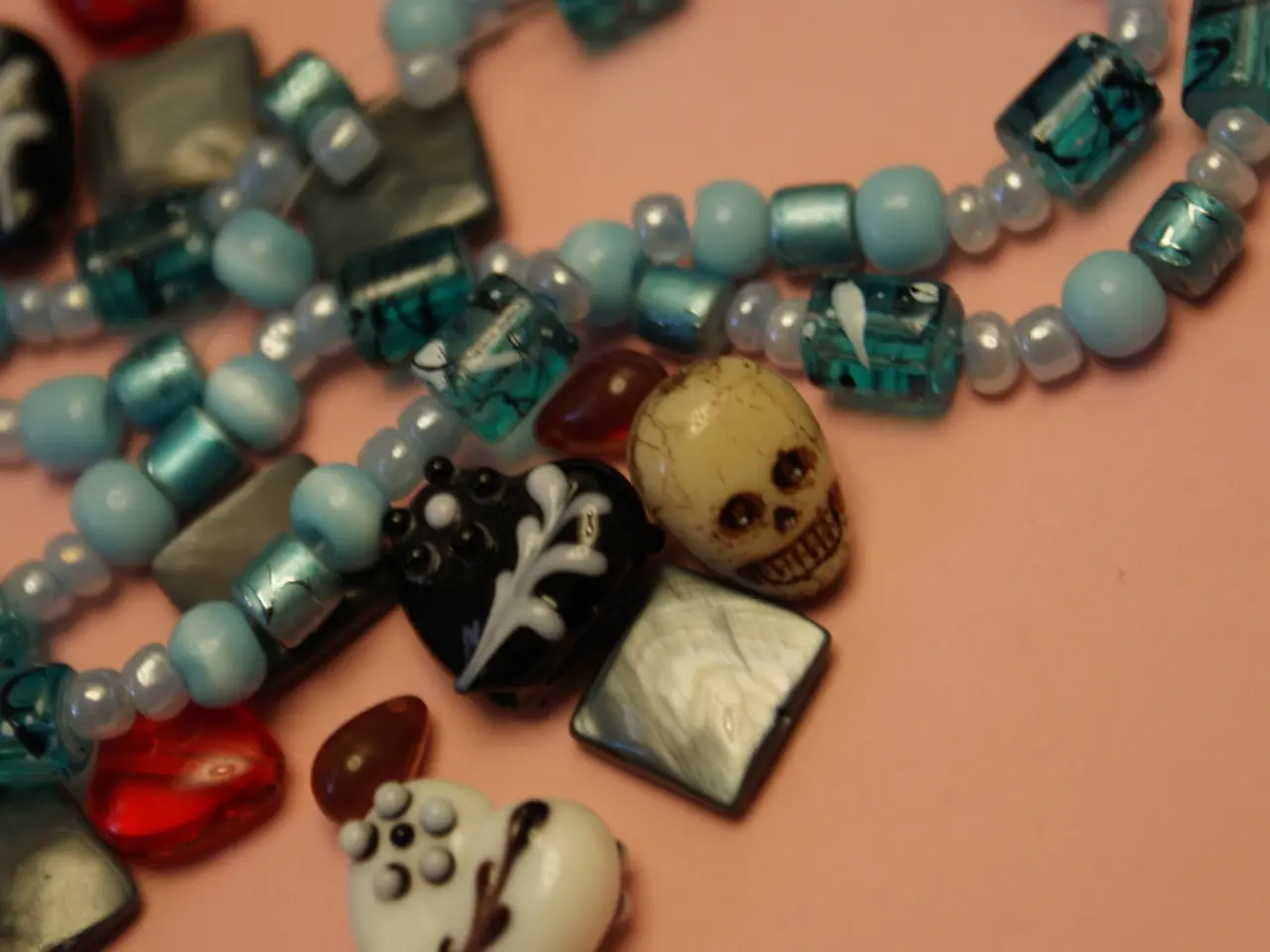Investigation into the Use of Amethyst in Classic Jewelry Designs
Amethyst, the stunning purple quartz gemstone, has captured the imagination of jewelry lovers and historians alike for centuries. Its rich history spans various eras and cultures, making it one of the most fascinating and enduring gems in the world.
In ancient Greece and Rome, amethyst was highly valued for its belief in protecting against intoxication, with the name deriving from the Greek “amethystos,” meaning “not drunken.” The stone was thought to symbolize calm and spiritual protection, often used in signet rings, amulets, and carved intaglios.
During the medieval era, amethyst was considered a stone of royalty and the clergy, symbolizing piety, celibacy, and wisdom. It was frequently used in religious jewelry such as bishops’ rings and crosses.
As we move into the Renaissance and Victorian periods, amethyst became popular in various forms of jewelry, often as faceted stones in elaborate rings and pendants. Its symbolism broadened to include sincerity, peace, and temperance, and it was also thought to bring healing.
The Art Nouveau and Art Deco eras saw amethyst incorporated into stylized, nature-inspired and geometric, bold designs, respectively. In the Art Nouveau period, designers emphasized its rich purple hue to evoke mysticism, while in the geometric Art Deco era, amethysts were cut into sharp shapes and used alongside diamonds to create glamorous contrasting designs.
In the modern and contemporary era, amethyst remains popular for its vibrant purple color and symbolic meanings, such as peace, tranquility, and spiritual growth. Designers mix traditional cabochon and faceted cuts, integrating amethyst into everything from fine high jewelry to everyday pieces, often inspired by its historical associations with clarity, sobriety, and protection.
Throughout history, amethyst has been used in various forms, from decorative purposes in gold rings and brooches during the Middle Ages to the intricate, angular combinations with other bold colored gems like turquoise and ruby in the 1960s and 1970s. John C Benjamin FGA DGA FIRV, an independent valuer, jewellery historian, and author of "Starting To Collect Antique Jewellery," has extensively documented the use of amethyst in jewelry throughout the ages.
Amethyst's popularity has ebbed and flowed over the years, but it has consistently maintained its allure. In the Edwardian era, pale Indian amethysts were popular for simple fringe necklaces and inexpensive brooches, while the Russian Emperor Alexander I presented a splendid set of Siberian amethyst and diamond jewels in 1837. Amethyst dwindled in demand through the 1920s and 1930s but saw a revival in post-war 'Retro' jewellery.
Amethyst is a transparent variety of crystalline quartz, known for its distinctive and recognizable purple color. It has been associated with spiritual goodness, virtuous behavior, and defense against intoxication since ancient times. Its ability to catch the eye and make an impression ensures its lasting appeal.
This synthesis is based on general known gemological and historical knowledge, as direct search results did not provide detailed information on amethyst’s history. The article was originally published in Gems&Jewellery Summer 2019, Volume 28, No.2.
- In the realm of fashion-and-beauty, amethyst's vibrant purple hue has been incorporated into various makeup trends, creating a regal and mystical look.
- Lifestyle magazines often feature articles on the diploma courses offered by gemmology foundations, equipping individuals with the knowledge to appreciate the beauty and value of amethysts.
- Food-and-drink pairings suggest that dark red wines complement the richness of amethyst, creating a harmony reminiscent of the stone's historical associations.
- Home-and-garden enthusiasts can add a touch of elegance to their interiors with amethyst decorative elements, such as vases, bowls, and figurines.
- Some relationship counselors believe that the protective qualities of amethyst can aid in strengthening bonds between couples, fostering a sense of peace and tranquility.
- Pets can enjoy the benefits of amethyst, particularly in the form of tumbled stones for their beds, as it is believed to promote health and well-being.
- For the traveler seeking exotic adventures, amethyst mines in locations like Brazil, Zambia, and Uruguay provide an opportunity to experience the mining process firsthand.
- Car enthusiasts might appreciate a custom amethyst gearshift knob or dashboard ornament, adding a touch of luxury and style to their vehicles, while shopping for unique accessories.




